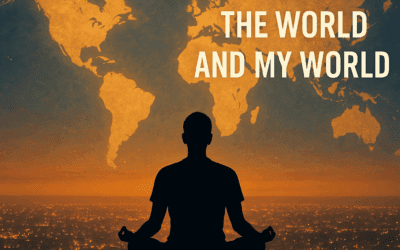The Waiting ParadoxHow Patience Breaks the Cycle of Passivity
In a world that valorizes constant doing, the act of waiting often feels like falling behind. Yet there’s a profound power in slowing our pace and choosing stillness with intention. This is not the passive drift that erodes momentum and confidence, but a deliberate pause—a fertile space where insight forms, resilience deepens, and right action emerges with clarity.
The Illusion of “Doing Nothing”
Passivity masquerades as waiting. It’s the numbness we feel when we’re uncertain or afraid—arms crossed, energy dissipated, time slipping through our fingers. In contrast, intentional patience is an active stance. It’s the poised tension of a bowstring, ready to release its arrow with precision rather than flinging it blindly in doubt.
Metaphor: Think of a seed underground. It’s not inert—it’s gathering nutrients, sensing light, anchoring roots. Beneath apparent stillness, life is in motion.
Intentional Stillness vs. Passive Drift
- Passive Drift:
- Motivated by fear or avoidance
- Seeks comfort in stagnation
- Leaves us feeling stuck and resentful
- Active Patience:
- Rooted in trust and discernment
- Welcomes discomfort as a teacher
- Builds momentum from within
By framing waiting as a practice—like meditation or breathwork—we reclaim agency. We stay present to our inner weather, rather than checking out until the storm passes.
Cultivating the Art of Patient Waiting
- Set Your Intention
Before pausing, clarify what you’re pausing for. Is it to listen, to gather information, or to let raw emotions settle? - Anchor in the Body
Notice your posture, your breath, the points of contact with the ground. Physical rootedness mirrors emotional steadiness. - Witness Without Judgment
Label thoughts and sensations (“rising anxiety,” “curiosity,” “hope”) and let them pass like clouds. - Define Mini–Action Steps
Even in waiting you can move—journal a question, sketch a plan, check in with a mentor. These micro-actions keep you engaged.
When to Release the Arrow
Active patience culminates in discernment. The bow must bend long enough to store power, but not so long that the wood weakens. Similarly, our pauses should give rise to clear next steps. Watch for alignment between inner knowing and external opportunity—that’s the moment to draw breath, release, and trust that your action carries the force of intention.
Moving Forward with Momentum
By practicing patience as an art, we transform each pause into a launchpad. We no longer fear the void; we trust it to refine our aim. Over time, this rhythm of intentional waiting and decisive action becomes our natural cadence—one that sustains us through uncertainty and fuels our growth.







1 Comment
Get involved!
Comments